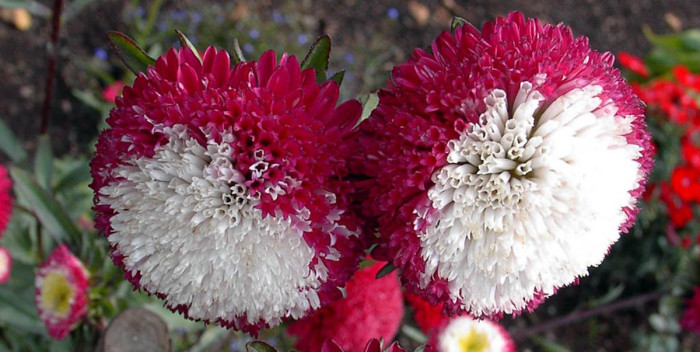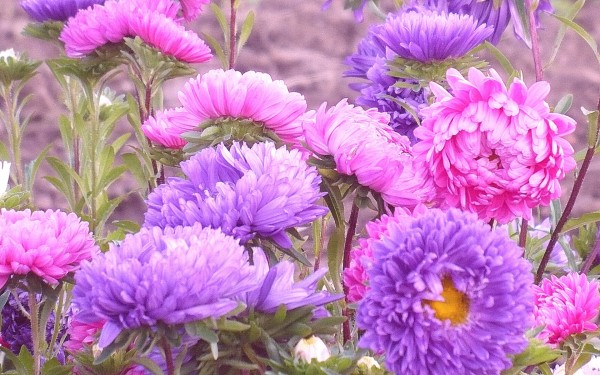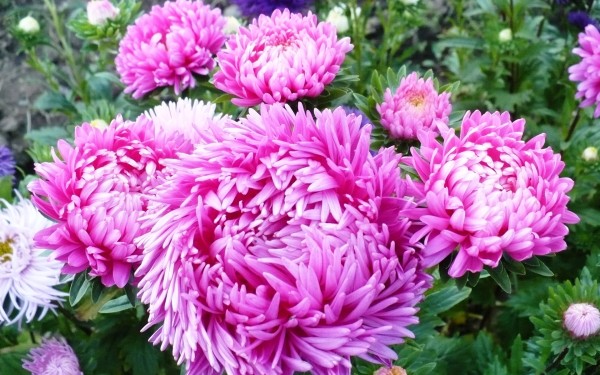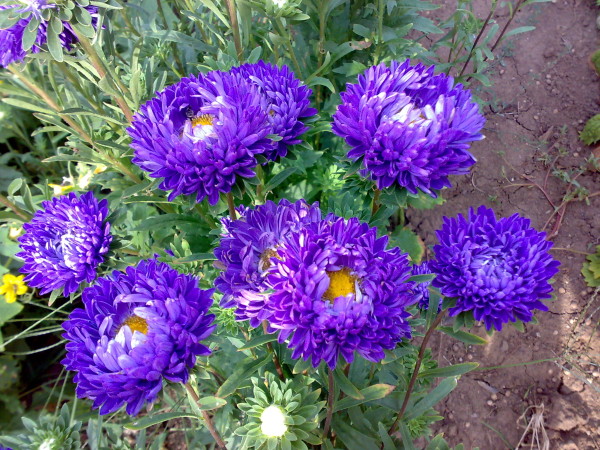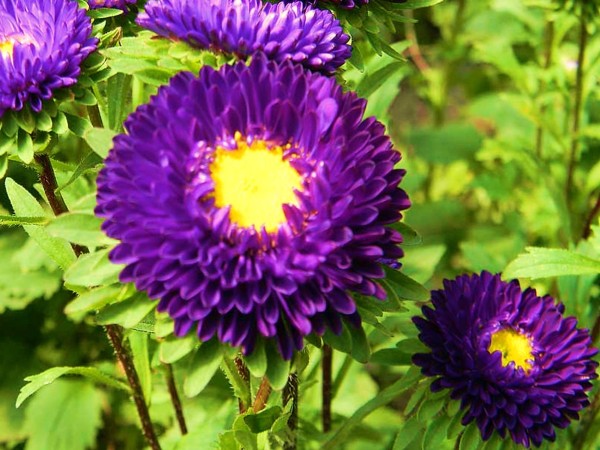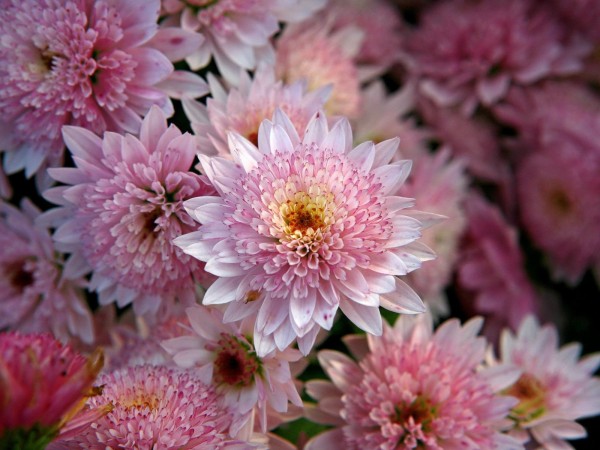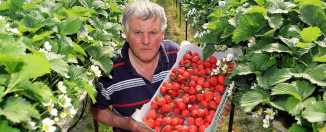Astra: landing and care
Perhaps there is no such person who has never heard of asters. These undemanding annuals with colorful spots paint gardens in the fall. They can be white, yellow, red, purple, and there are also types with a double color. Growing them and caring for them is a snap.
Content
Planting asters
Almost anyone can breed asters. Even an inexperienced gardener can do this. Grow this flower can be from seeds. This is done in two ways:
- Growing seedlings.
- Planting seeds directly into the ground.
The first method requires additional time, but this method is the most suitable for plant propagation. Sowing seeds for seedlings is necessary in May or April. The specific time is determined by the plant variety. Before planting, aster seeds must be wrapped in a piece of cloth and left for several hours in a solution of potassium permanganate of low concentration. Then the seeds must be placed in a plastic bag at room temperature for germination. Any pot or other container is suitable for breeding seedlings.
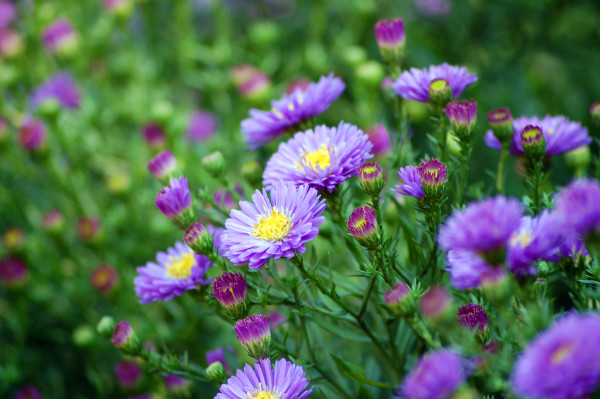 Astra needs a light earth rich in nutrients. Before planting, the soil must be watered with a potassium permanganate solution for disinfection and grooves of small depth must be made in it. Place the germinated seeds in these furrows and sprinkle with a little sand. Then close the top of the drawer with glass and put it in a warm room.
Astra needs a light earth rich in nutrients. Before planting, the soil must be watered with a potassium permanganate solution for disinfection and grooves of small depth must be made in it. Place the germinated seeds in these furrows and sprinkle with a little sand. Then close the top of the drawer with glass and put it in a warm room.
After a few days, the first shoots will germinate. As soon as they appear, remove the container to a less warm place and water the sprouts moderately. With the appearance of 4 leaves, transplant the seedlings in small containers, while pinching the root. For transplanting, take soil with the same composition, adding a little ash to it. Don't water the aster seedlings too often to keep it from getting sick.
Aster varieties
Now there are over 4,000 different varieties of asters. Thanks to the tireless work of breeders, all new varieties are being developed. The most popular types of asters are:
- Alpine aster grows up to 40 cm in height. This flower has single and large inflorescences of pink-lilac colors. The flowering period is May-June.
- The Italian aster reaches 60 cm in height. The flowers of this variety grow up to 4 cm in diameter and are painted mainly in lilac-purple colors.
- The stone-leaved aster can grow up to 40 cm in height. This aster has small pink or purple baskets.
Home aster
At home, keeping and growing asters is not difficult. It is important to create an optimal level of illumination for the flower. To do this, turn regularly plant pot on the windowsill. So you will achieve uniform growth of all parts of the plant and the bush will turn out to be symmetrical. Water the plant sparingly to keep moisture from stagnating in the pot, but also keep the soil from drying out. Asters do not like stuffiness, so periodically ventilate the room where the aster lives.
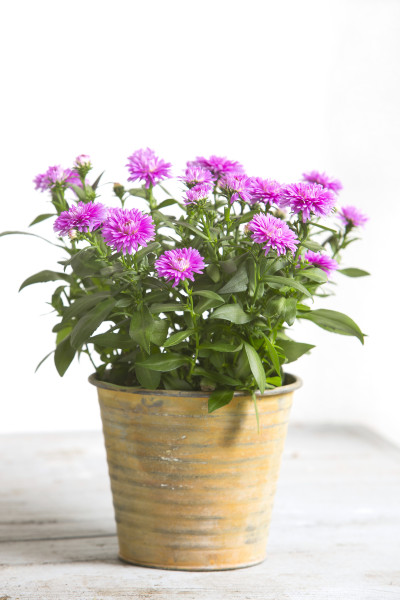 Some types of asters look worse with excessive spreading. Due to the extra side shoots, the flowers become smaller and no seeds are formed. In this regard, remove unnecessary shoots in a timely manner.
Some types of asters look worse with excessive spreading. Due to the extra side shoots, the flowers become smaller and no seeds are formed. In this regard, remove unnecessary shoots in a timely manner.
Every 4 years, the aster bush must be divided. After flowering, the bush is removed from the pot and carefully freed from the old soil. The bush is divided in such a way that at least 3 shoots are obtained in each part and a healthy root remains. These parts should be planted in new pots and cared for as usual.
Asters in the open field
The seeds of this plant can not be grown by seedlings, but immediately sown in open ground... This can be done in April or May when the soil is well warmed up. You can sow seeds in the fall with the onset of frost.
- Make 2 cm deep furrows in the soil. Before that, for disinfection, it is recommended to water the planting site with a weak solution of potassium permanganate to prevent diseases.
- Place the seeds in the grooves and cover with earth. Water with warm water if planting in spring. Cover the planting site with foil before the first shoots appear.
- When the fourth true leaves appear on the seedlings, thin out the planting. At the same time, try not to damage the removed plant. It can be transplanted to another location.
- Cover the autumn planting of seeds with a layer of humus up to 4 cm and leave until spring. In the spring, loosen the aisles without removing humus until sprouts appear.
Caring for asters
When watering an aster, remember that this flower does not tolerate excess dampness. But at the same time, in hot weather, the plant needs to water intensely. Be sure to water the aster abundantly during bud formation. This will ensure the lush bloom of the aster.
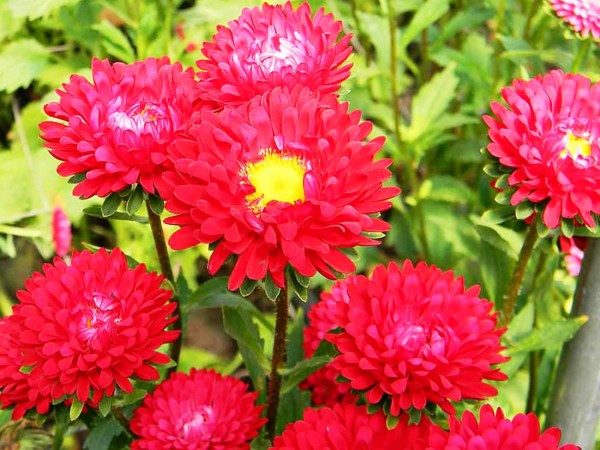 Asters do not need frequent feeding. The first time to fertilize is necessary a couple of weeks after planting, using mineral fertilizers. With the appearance of buds, feed the plant with nitrogen-containing substances. Use the fertilizer for the third and last time during the flowering period. At this time, add superphosphate or potassium sulfate. It is not necessary to introduce organic matter, asters do not like it.
Asters do not need frequent feeding. The first time to fertilize is necessary a couple of weeks after planting, using mineral fertilizers. With the appearance of buds, feed the plant with nitrogen-containing substances. Use the fertilizer for the third and last time during the flowering period. At this time, add superphosphate or potassium sulfate. It is not necessary to introduce organic matter, asters do not like it.
Prune the bush regularly and remove side branches if necessary. This will form the correct plant. Pruning is necessary to increase the flowering period.
